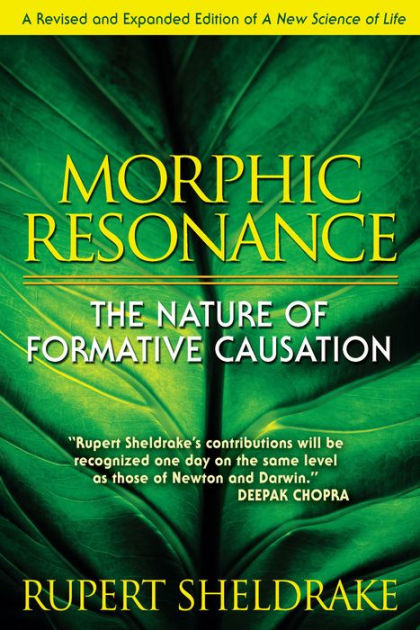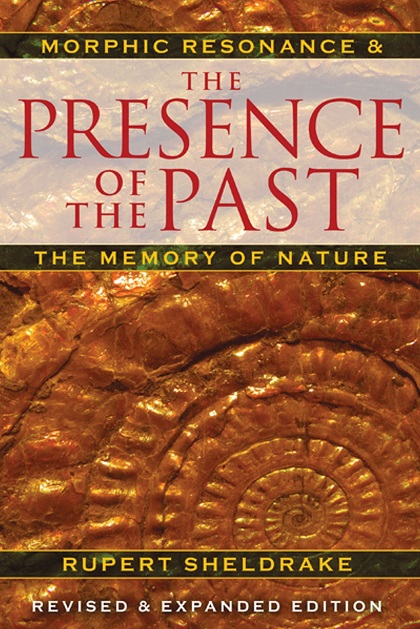|
home | what's new | other sites | contact | about |
|||
|
Word Gems exploring self-realization, sacred personhood, and full humanity
Part I
return to "Evolution Controversy" contents page
The following is an exceedingly brief synopsis of the history of science in terms of its metaphysical assumptions. Dr. Sheldrake offers a most thoughtful and extensive discussion of this issue in his two books:
Let’s recall that modern materialistic science operates in the marketplace as a kind of “rival religion” opposing any notion of Intelligent Design. As such, the “high priests” in white lab-coats, employed in the “Temple of Materialism,” promote their own “infallible doctrines” and tenets of faith. We’ll look at the historical roots of this cult of materialism.
Pythagoras: Died 494 BCE. Influenced by ideas from Egypt, Persia, Babylon. Taught that the changing world of common experience was subsumed by a changeless eternal reality. This principle of immutability, he believed, was centered in the “divinity of number,” constants of ratio and proportion. Democritus: Died 360 BCE. Gave to us the philosophy of atomism, of eternal fundamental particles. “There is nothing but atoms and the void.” He, too, was seeking for an underlying changeless reality. Plato: Died 346 BCE. Influenced by Pythagoras. Impressed by the apparent certainty of mathematics. This led him to believe in a hidden world of changeless forms or archetypal ideas. For example, we see a tree, but the tree constantly changes; behind this image of the tree, Plato taught, was a hidden form or original concept of "tree-ness," the eternal idea of the tree. These eternal forms and ideas, he preached, lie outside time and space and are not part of our universe. Aristotle: Died 320 BCE. A student of Plato. He did not accept Plato’s eternal forms but, instead, taught that all things, within themselves, have a blueprint of what they are to be (entelechy). Following from this, he also taught that all things have a life-source, a soul, containing the entity's plans and goals for development. Nature was alive, in his view, not mechanistic, and led by natural purposes. Aquinas: Died 1274. Led a movement which synthesized Aristotelian thought with Medieval Christianity. At the time of the Renaissance, the founders of modern science adopted the Pythagorean and Platonic traditions, eternal ideas, and rejected animistic Aristotelian views of souls in all of nature. Galileo: Died 1642. Adopted a form of Platonism, subscribing to ”immutable laws which [nature] never transgresses.” Descartes: Died 1650. Sheldrake: “Descartes took this mathematical theory of reality [the Pythagorean view] to an extreme that has dominated Western science ever since. On the one hand, there was the material universe, extended in mathematical space and entirely governed by mathematical laws. On the other hand, there were rational minds, which, like the mind of God, were nonmaterial in nature. They were spiritual substances that were not suspended in space. All plants and animals became inanimate machines and so did human bodies. Only rational minds were nonmechanical – they were spiritual” [i.e., the “ghost in the machine”]. Descartes’ philosophy rejected the Aristotelian-Aquinas view that the world and nature were alive. He expelled all souls and purpose from nature. Only humans had conscious minds and purposes. For Descartes, everything in nature worked mechanically, was inanimate, but for human minds. Newton: Died 1727. Brought to high expression a view of an interconnected, deterministic universe of cause-and-effect, a grand interplay of mathematical laws, particles, and forces. However, he taught that inert matter could not move itself and therefore God must be seen as the true force behind the forces of nature. This aspect of the divine was discarded by his students who soon deified matter itself as generating its own forces. Maxwell: Died 1879. Along with Faraday, he made prominent in modern physics the concept of fields; invisible, organizing structures which give direction to energy. Darwin: Died 1882. Desired to remove a “miracle-working God” from the science of formative causation and replaced a "designing God” with the principles of natural selection and gradualism. Einstein: Died 1955. He frequently disputed with Bohr (below) concerning the lack of determinism in Quantum Theory. Arguing for predictability, Einstein was wrong in this respect. Bohr: Died 1962. One of the fathers of Quantum Theory, the abandonment of strict determinism, cause-and-effect, a rejection of the Newtonian “clockwork universe”; instead, the cosmos is now seen in terms of probability waves. Sheldrake: Quantum Theory “is the area in which the Pythagorean quest is being pursued at present with most vigor: the attempt to find behind the changing world of experience an eternal mathematical reality, a reality that does not evolve in time and is not affected by anything that actually happens.”
Editor’s note: The area of science, it’s been said, might be seen as humankind’s long struggle to harness, and make sense of, the wild and unforgiving forces of nature. We seek for certainty, for predictability, for the comfort of reliable outcomes in a hostile and terrifying world. In the article on “Cultism,” we discussed how man’s desire for certainty, the fear of change, can lead to pathological outcomes. We want to believe that there are definite answers. We don’t like to hear about Quantum Theory and its “fields of probability,” with strict cause-and-effect thrown out the window as obsolete. Even Einstein balked at this as he chided Bohr with “God doesn’t play dice with the universe.” As it turns out, however, God does play dice with the universe. Einstein was wrong. There are deep, convoluted – even egoically dysfunctional – reasons why, for thousands of years, people have believed in eternal, unchanging, laws of nature. Is this how the universe really works? Even if this proposition were true, there is no way to test it. It’s an unverifiable metaphysical assumption by the “rival religion”; yet it's served to us as "gospel truth" by materialistic science. This notion of “eternal law,” however, can be falsified. See Dr. Sheldrake's book, “The Science Delusion,” wherein he outlines the evidence, the facts, that so-called “laws” of nature, the purported “constants,” have been changing over time. It appears to be correct, as Dr. Sheldrake asserts, that the regularities of nature are more like habits, which develop over the eons, than the anthropomorphized eternal "laws." Editor's note: It seems that the concept of "law" was adopted as an add-on feature to the idea that eternal verities existed in the mind of God and, therefore, with God as the putative "law-giver," it seemed reasonable to men of old to label the regularities of nature as "laws." In this confusion, we witness myth built upon myth. As we've discussed, almost everything that we were taught since childhood -- is wrong.
the universe is a vast 'becoming' Most scientists today, it seems, are Platonists; but, instead of believing Plato and Pythagoras, we should have paid more attention to Heraclitus (died 470 BCE). This very wise Greek teacher spoke of the universality, the ineluctability, of change: “No one steps into the same river twice.” We can hear him advising us not to be afraid of change, but to embrace it (sounds like Robert encouraging Francesca), because it’s designed to take us to our destiny. He taught that everything is in process of becoming something new. The universe itself is not static, not eternally and immutably frozen, but fluid, a vast 'becoming,' as are we. (See Will Durant's discussion on Heraclitus, "The Story Of Civilization.") Heraclitus leaves us wishing to know more of his brilliant and prescient insights into the nature of things.
|
|||
|
|

